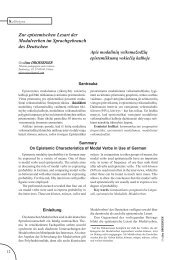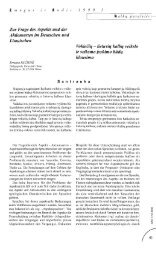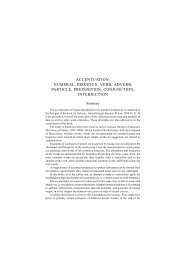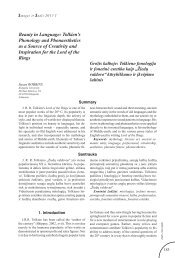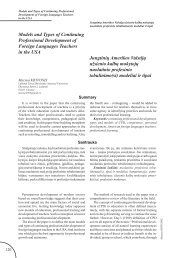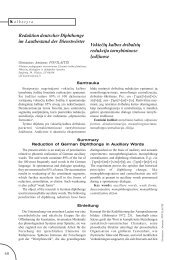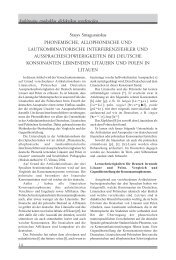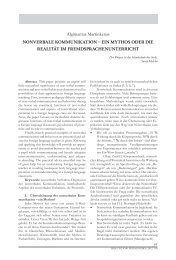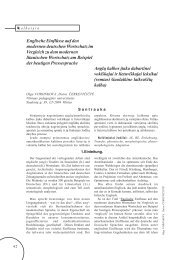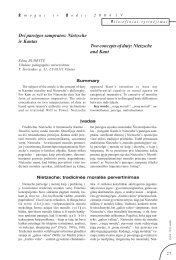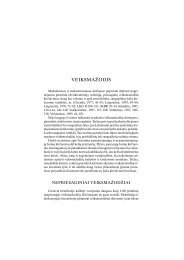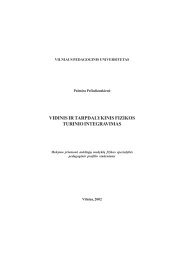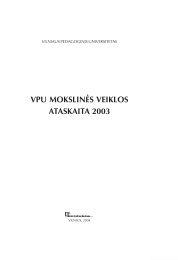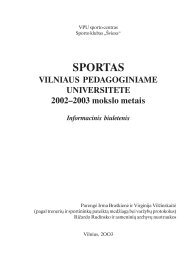Arūnas Diškus - VPU biblioteka - Vilniaus pedagoginis universitetas
Arūnas Diškus - VPU biblioteka - Vilniaus pedagoginis universitetas
Arūnas Diškus - VPU biblioteka - Vilniaus pedagoginis universitetas
Create successful ePaper yourself
Turn your PDF publications into a flip-book with our unique Google optimized e-Paper software.
Species number<br />
50<br />
45<br />
40<br />
35<br />
30<br />
25<br />
20<br />
15<br />
10<br />
5<br />
0<br />
Armenia<br />
Host-plants unknown<br />
48%<br />
Azerbaijan<br />
Rosaceae 28%<br />
Iran<br />
Turkmenistan<br />
Fig. 9. Currently known species number of nepticulids per countries of Central Asia:<br />
Armenia (south-eastern areas only), Azerbaijan (south-eastern areas only), Iran (except the<br />
southern territories), Turkmenistan, Uzbekistan, Tajikistan, Afghanistan (northern provinces<br />
only), Kazakhstan (western and southern parts), Kyrgyzstan<br />
Species number<br />
35<br />
30<br />
25<br />
20<br />
15<br />
10<br />
5<br />
0<br />
Kopetdag Deserts &<br />
oases<br />
Uzbekistan<br />
Tajikistan<br />
Afghanistan<br />
Fig. 11. Trophical relationships of Nepticulidae of Central Asia<br />
Kazakhstan<br />
Kyrgyzstan<br />
Gissar Tyan Shan'<br />
Asian endemic Species occuring from Asia to Europe<br />
Fig. 10. Main natural areas of Central Asia and nepticulid species number<br />
Salicaceae 6%<br />
Ulmaceae 4%<br />
Rhamnaceae 4%<br />
Aceraceae 4%<br />
Betulaceae 3%<br />
Oth. families 3%<br />
19



